
While its root event, the former Wicomico Farm and Home Show, would have celebrated its 80th anniversary last year, the Wicomico County Fair officially celebrated its third edition in the county’s sesquicentennial year. As I sometimes do, this post will meander between photos and text to tell its story.
We actually attended all three days of the WCF, although Friday was just for a brief stop to see how our photos did.

Do you see the purple ribbon signifying Best in Show? One of mine is next to that on the left, just one of the also-rans. Kim had two of hers place in their categories, but that was about it between the three of us. I thought I had some nice photos, but I guess the judges liked others better.
So that was the extent of our Friday, although our daughter stayed to watch the concert (from local boy gone Nashville Jimmy Charles) and fireworks.
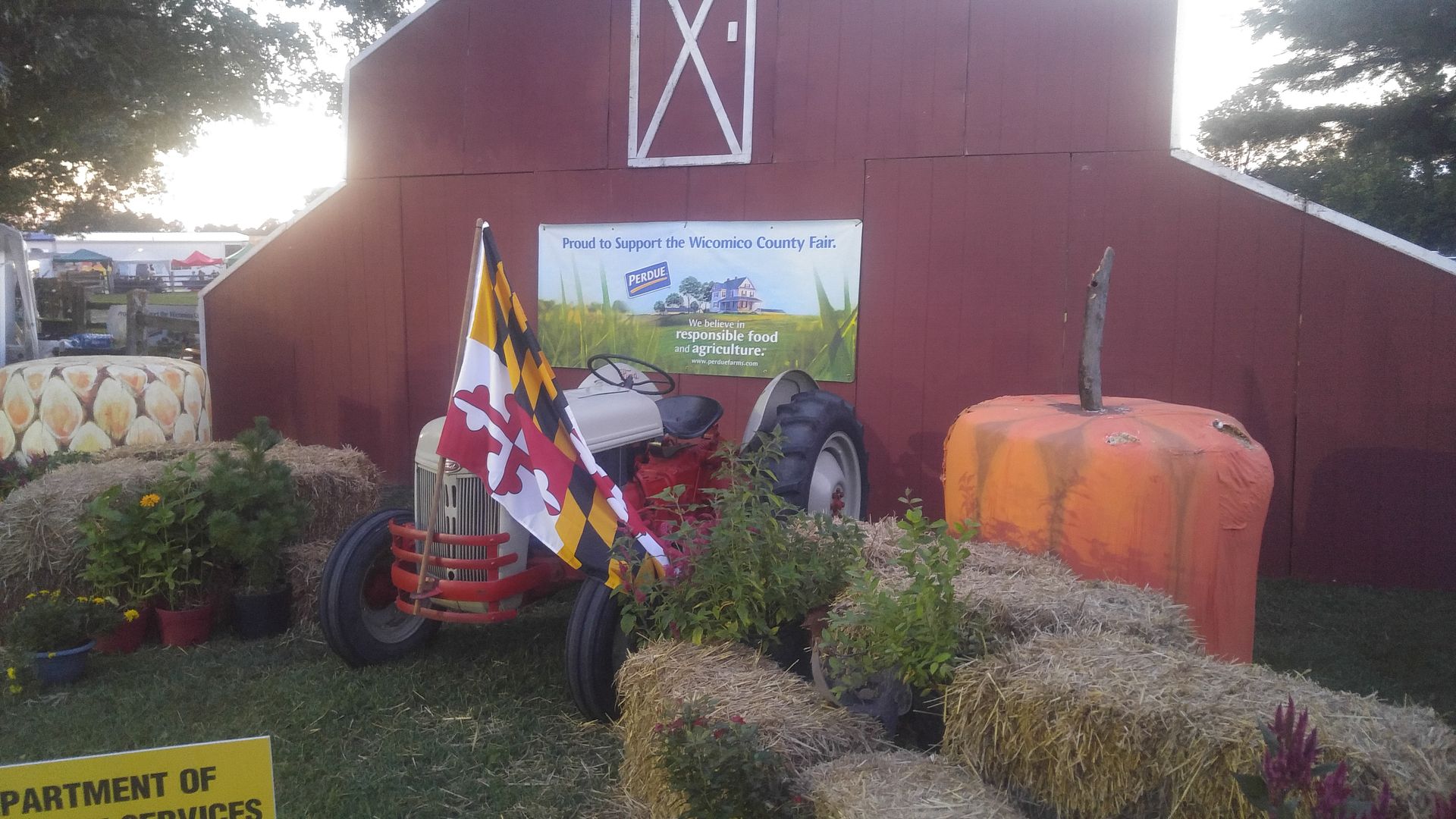
Now that we knew the fate of our entries, we came back on Saturday to see one of our favorite events at the WCF, Cowboy Mounted Shooting.

When the WCF became a fair in 2015, this was an event that was brought in. It’s probably the biggest draw they have as the bleachers are usually well-filled to watch this competition, which is one of a handful of fairs the local Mason Dixon Deputies group does around the region. Of the evening shots I took I thought this was the best.
Once the competition stage was over – each runs about an hour, give or take – I decided to get off my behind and walk around.

I did so only to find that a lot of the WCF was hidden across the road behind the rides.

I found several vendors and some other attractions not easily found by the casual visitor.

Because the Cowboy Mounted Shooting runs its own soundtrack (a surprising mix of country, classic rock, and a little bit of other stuff) I didn’t hear the bands until I was almost on top of them. This one was called Rip Tide, which played a few classic rock staples to close their act.

As we had a bite to eat from the (somewhat limited) selection of vendors back there, this group called Swamp Donkey took the stage as we ate. They were in the same vein as a number of albums I’ve reviewed over the last couple years – sort of a mix of country, Americana, and roots rock. The band sure put a spin on Pink Floyd, though.
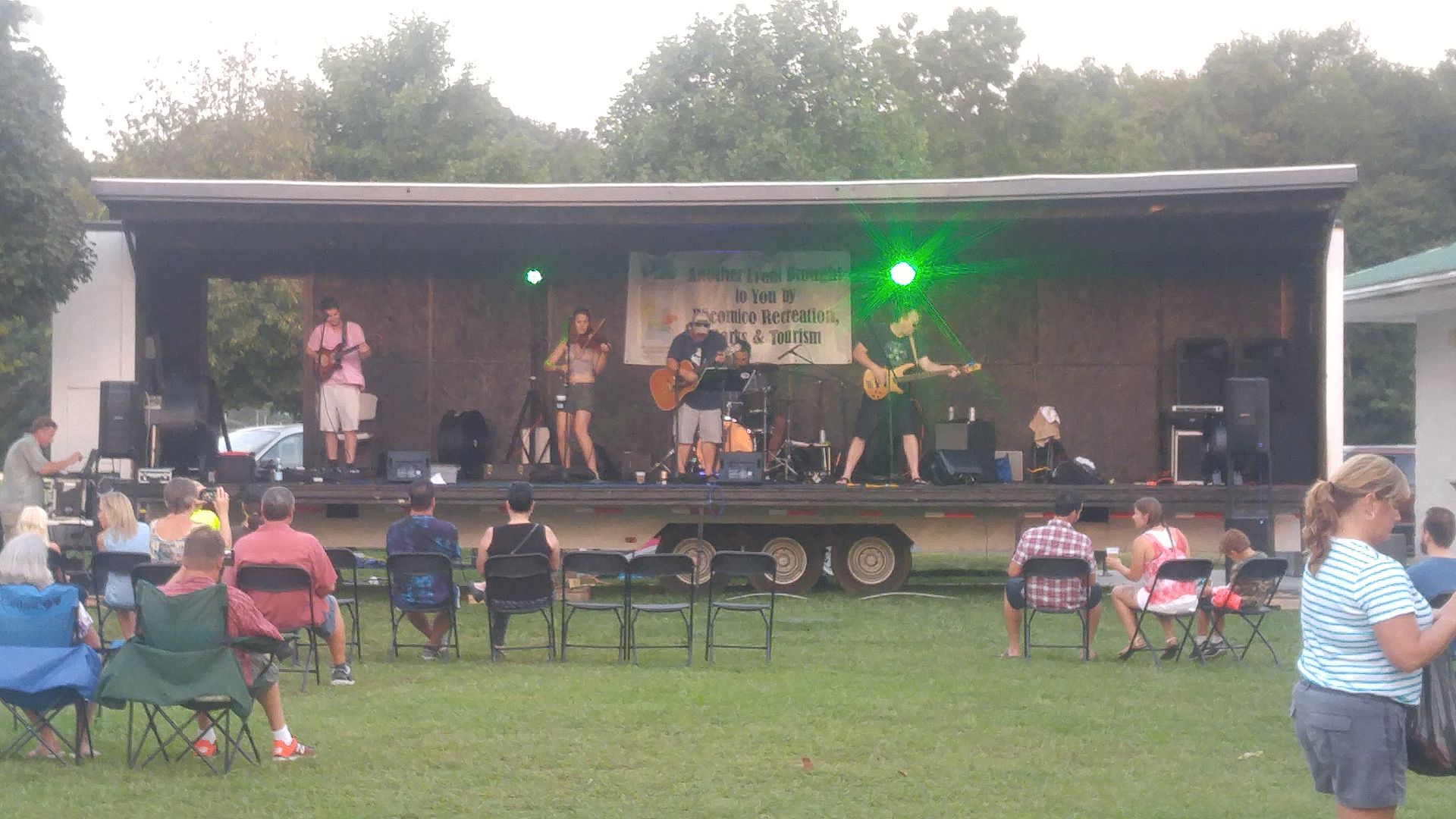
This photo was just a cool shot that provides a transition break.

On Sunday we were there before noon in order to hear Pastor Oren Perdue preach, with a message gleaned from the Book of Amos. It’s not one of the more studied books, but he made the message interesting. (If your child attends the Summer Fun camp at Salisbury Baptist, you’ll know who Pastor Perdue is because he runs the Friday evening rodeo. That’s how Kim met him.)
Since we started from the side I’d seen the evening before, we made our way back. This train wasn’t doing much, nor had it the evening before.
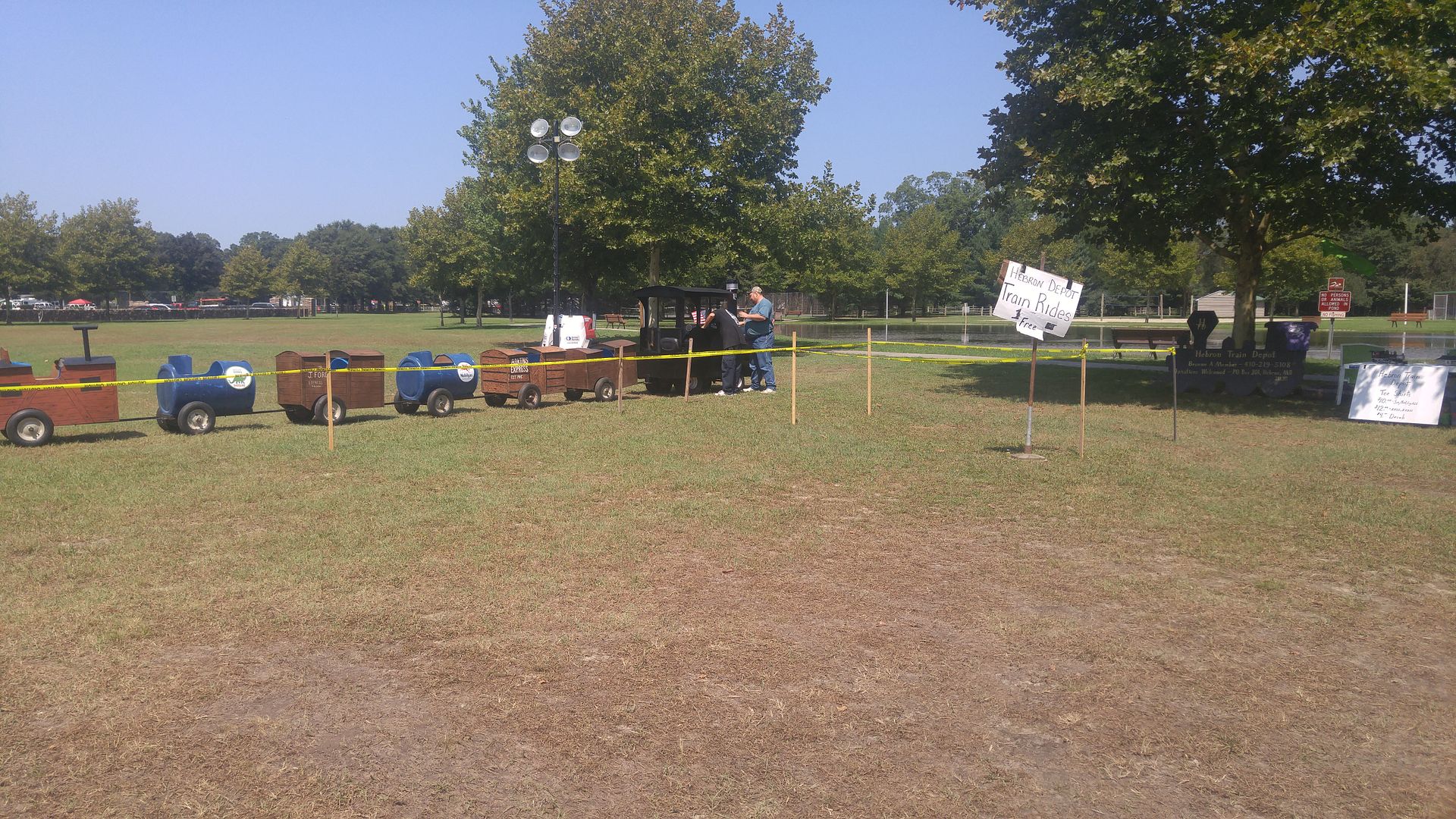
I noticed the ride price had been changed to “free,” which helps make a point I’ll return to in a bit.
And if it’s a agricultural event in this county, you’ll see one company there almost every time.

I liked this truck better, though.
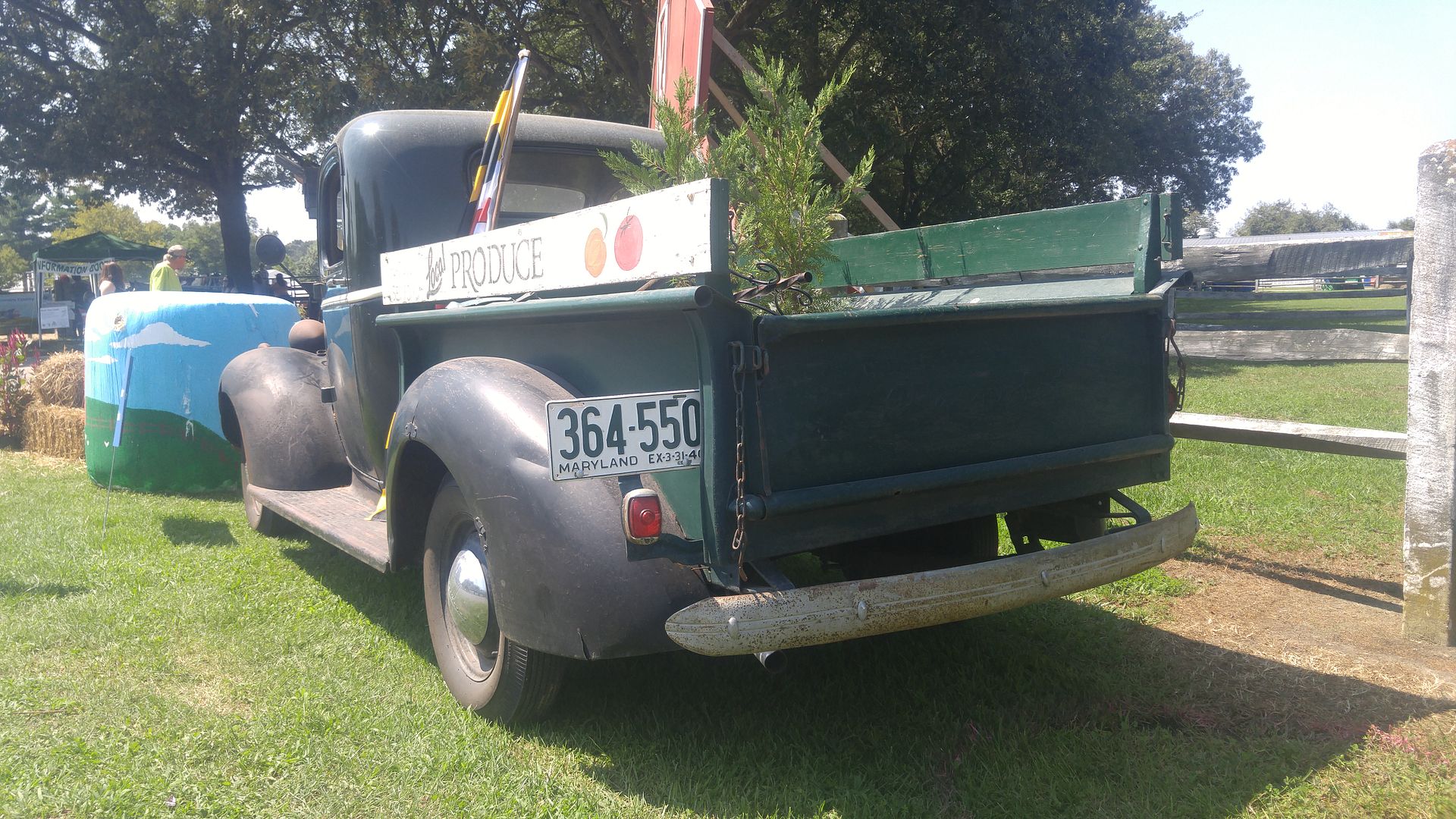
That blue-and-yellow Perdue label was found a lot, not to mention the orange and green of competing tractor companies, too.
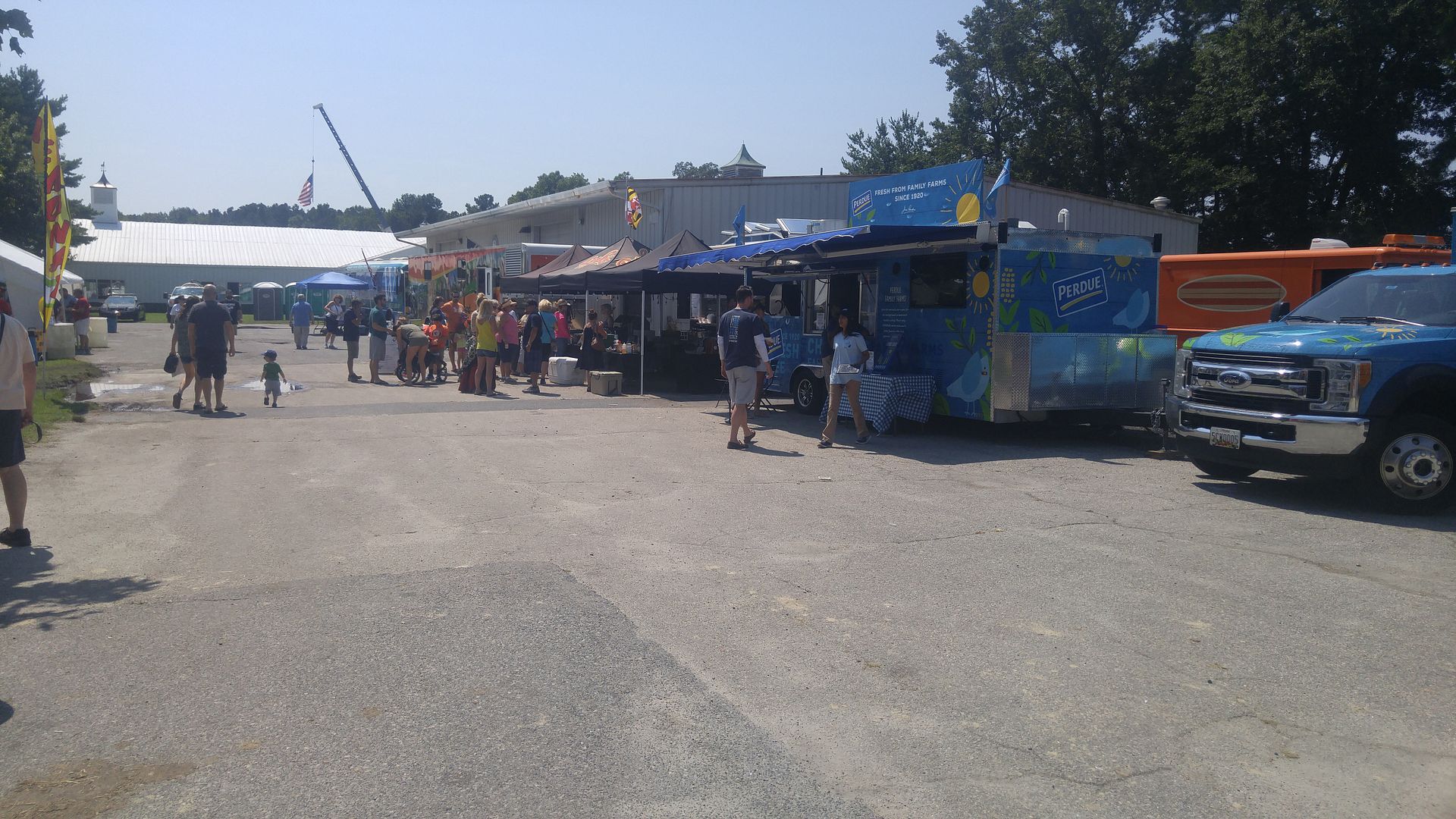


The orange ones did more work, as their local outlet was a sponsor of the mounted shooting.
The state of Maryland even had its nose in with an agriculture RV.

Cops on one side, fish on the other: the state was well-represented.
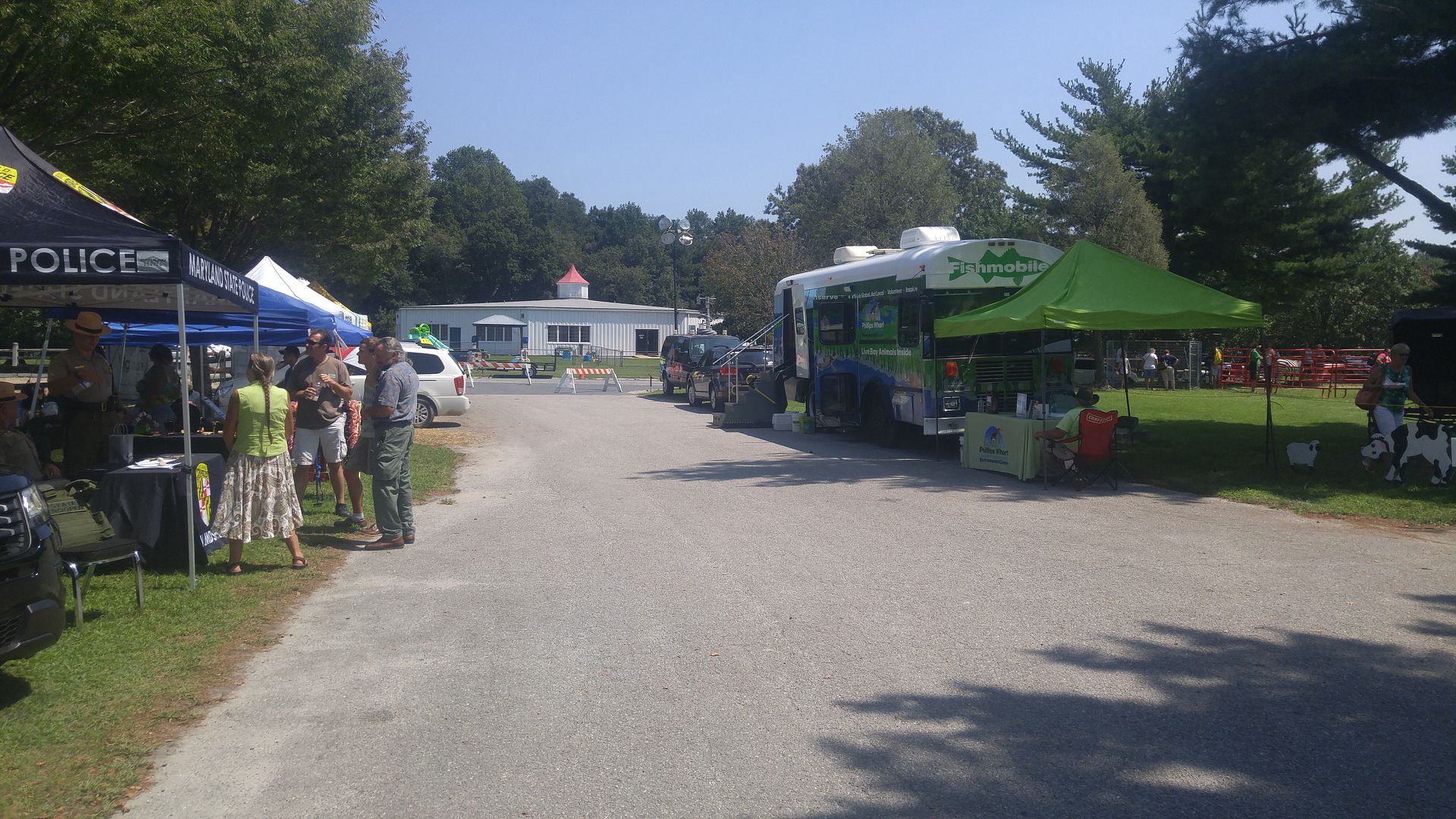
You could even find a few non-native beasts.

And here’s a clash of cultures: a cowgirl on her smart phone.

Day 2 of the CMS competition was packing them in again. And I swear I didn’t touch the second shot, but I used it solely because that point of light was in a rather interesting place.


Yet the mounted shooters weren’t the only equestrians there, as much of the grounds were taken up for more traditional competition.

And I don’t think there’s much call to remove this plaque from their venue.

Nor would it be a fair without barnyard animals.

Look, I grew up in a rural county so I’m aware of the extent 4-H is still popular among the youth here. Inside the Carriage House was their competition field (as well as that for the rest of us) in arts, crafts, and yummy looking items from the gardens and kitchens of Wicomico County.


I was disappointed by the truck show, though. It wasn’t what I was expecting – these would have been nice additions to some classic old restored Big Three trucks and maybe a few Jeeps and imports. Not just a handful of work trucks.

And while it wasn’t unexpected, we arrived too late on Saturday to see LG Boyd Rutherford. In fact, I really didn’t see many candidates pressing the flesh at the WCF when I was there, even though the local GOP was in its usual place. Most of them participated in the Saturday afternoon parade, then skipped out to other events, I guess.
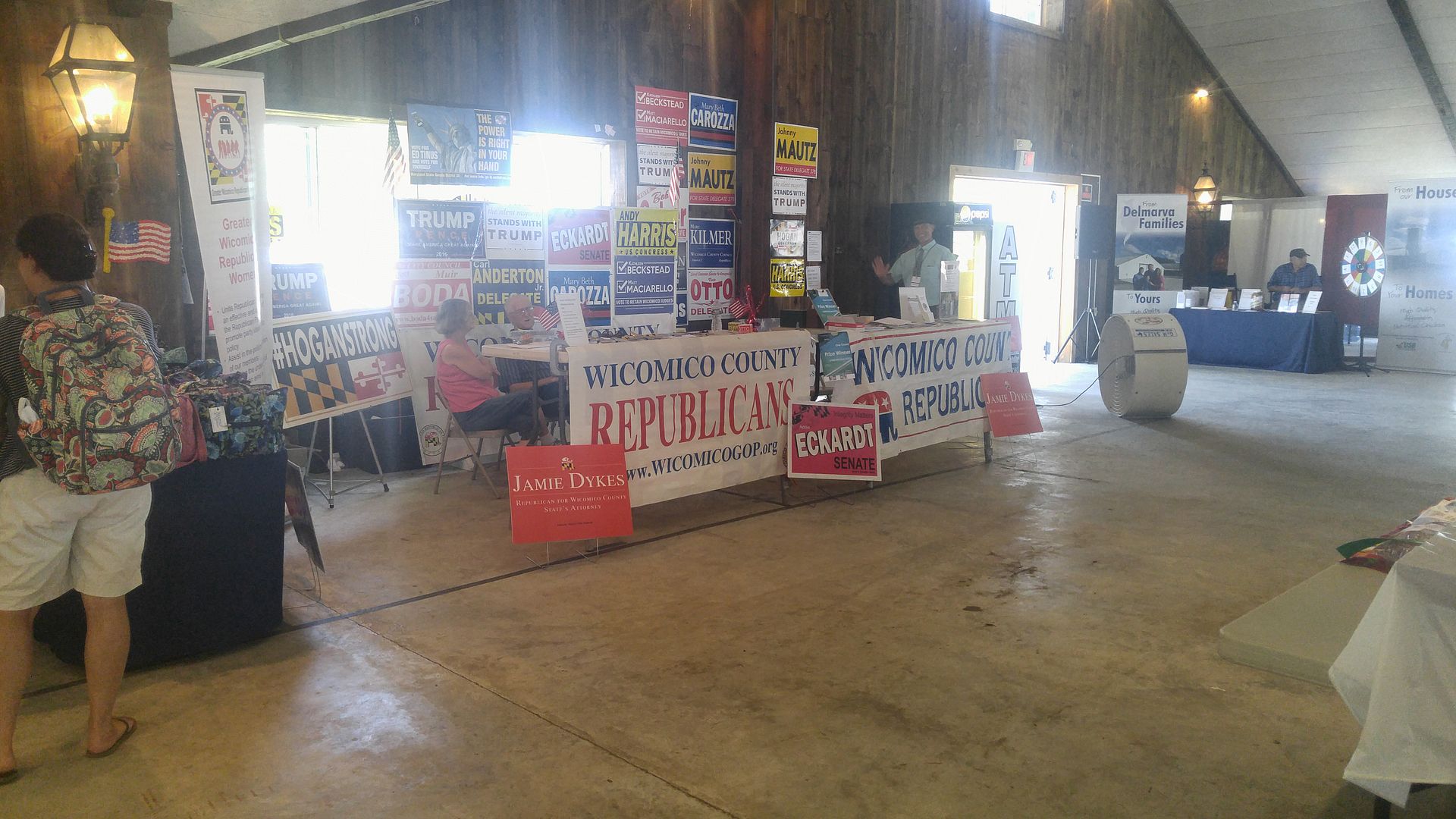
The only candidate with a regular presence there was Jamie Dykes, a Republican running for State’s Attorney. Granted, she was very diligent about being there and engaging voters.

Next year, however, the joint will be crawling with them. I wonder if they will resurrect the buffalo chip tossing I once participated in as someone on the ballot to be elected.
But if I were to make a suggestion for next year, it would be to somehow better tie in the two sides of the fair. Because of the lay of the land, the poor vendors on the east side of the road had hardly any foot traffic (and at least one I spoke to complained about the lack of it.) Maybe the rides need to go at the very end, with the beer garden and vendor row placed closer to the center. In fact, I was told by city councilman Muir Boda (who I did see there) that the dunking booth the Jaycees were sponsoring was vandalized overnight on Saturday. So something needs to be done about that issue.
Once they got through the sauna of Friday evening (and the monsoon that followed, luckily after the fair ended) though, the weather turned out near-perfect. It looked like they had great crowds, the likes of which I haven’t seen before at the Fair (or especially its predecessor Farm and Home Show, which was about on its last legs.) So if they can get the siting issue fixed for next year (a large map would definitely help!) they may have a strong event worthy of the county it represents.

